Overview
- Credit Line
- United States Holocaust Memorial Museum Collection, Gift of Felix Berkovich
- Contributor
-
Artist:
Arthur Szyk
- Biography
-
Arthur Szyk (1894-1951) was born to Jewish parents, Solomon and Eugenia Szyk in Łódź, Poland, which at the time was part of the Russian Empire. He had his first public art exhibition at age 15, and then went to Paris, France, for formal art training at the Academie Julian. He visited Palestine in 1914 with a group of Polish-Jewish artists and studied Muslim art. Upon his return, he was conscripted into the Russian Army and served in World War I. He married Julia Liekerman in 1916, and they had a son, George, in 1917. In 1918, Poland regained independence, but continued to fight a series of regional wars to secure its boundaries. Between 1919 and 1920, during Poland's war against the Soviet Bolsheviks, Syzk served as a cavalry officer and artistic director of the Department of Propaganda for the Polish Army in Łódź. In 1921, he and his family moved to Paris where his daughter, Alexandra was born the following year.
Szyk was well known for his illuminations and book illustrations, in a style reminiscent of Persian miniatures. He worked on several significant projects in France, including illustrating the Statute of Kalisz, the Haggadah, and a series of watercolors on the American Revolutionary War. The themes of his most admired works, democracy and Judaism, were already well established, earning him both fame and significant commissions. In 1934, Szyk traveled to the United States for exhibitions of his work and to receive the George Washington Bicentennial Medal, awarded by the US Congress. He resided in England from 1937-1940 to supervise the publication of the Haggadah. In 1939, following Germany's invasion of Poland, he focused on producing anti-Nazi editorial cartoons published in many Western newspapers and magazines. During the German occupation of Poland, his 70 year old mother, Eugenia, and her Polish companion were forced to live in the Łódź ghetto. In 1943, they were transported to Majdanek concentration camp and killed.
In late 1940, Szyk immigrated to the United States with his family. He became a leading anti-Fascist political caricaturist as well as an advocate for Jewish rescue. In addition to his widely published satirical art, Szyk devoted a great deal of time and energy to the Emergency Committee to Save the Jewish People of Europe, and pushed for the establishment of an independent Jewish state in Palestine. Szyk received his US citizenship in 1948. In 1951, he was investigated by the United States House Un-American Activities Committee as a suspected Communist. His son, speaking on his behalf, declared his non-affiliation with any Communist organization. Later that year, on September 13, Szyk suffered a heart attack and died at age 57.
Physical Details
- Classification
-
Exchange Media
- Category
-
Postage stamps
- Object Type
-
Postage stamps (lcsh)
- Physical Description
- Block of four stamps from Liberia, denomination of 5, with art work by Arthur Szyk. Stamps are multi-colored and show a central figure of a man in a blue uniform (Jehudi Ashmun) leading a group of local troops.
Rights & Restrictions
- Conditions on Access
- No restrictions on access
- Conditions on Use
- No restrictions on use
Keywords & Subjects
- Geographic Name
- Liberia.
- Personal Name
- Ashmun, J. (Jehudi), 1794-1828.
Administrative Notes
- Legal Status
- Permanent Collection
- Provenance
- The postage stamps were donated to the United States Holocaust Memorial Museum in 2002 by Felix Berkovich.
- Record last modified:
- 2024-01-29 12:56:38
- This page:
- https://collections.ushmm.org/search/catalog/irn520207
Download & Licensing
In-Person Research
- By Appointment
- Request 21 Days in Advance of Visit
- Plan a Research Visit
- Request to See This Object
Contact Us
Also in Felix Berkovich collection
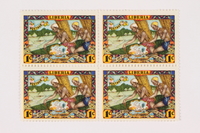
Postage stamps
Object

Postage stamps
Object
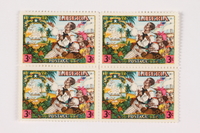
Postage stamps
Object
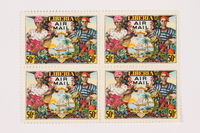
Postage stamps
Object
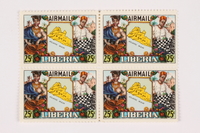
Postage stamps
Object
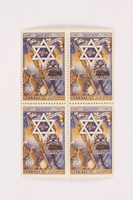
Postage stamps
Object

Postage stamps
Object

Postage stamps
Object
Envelope
Object




